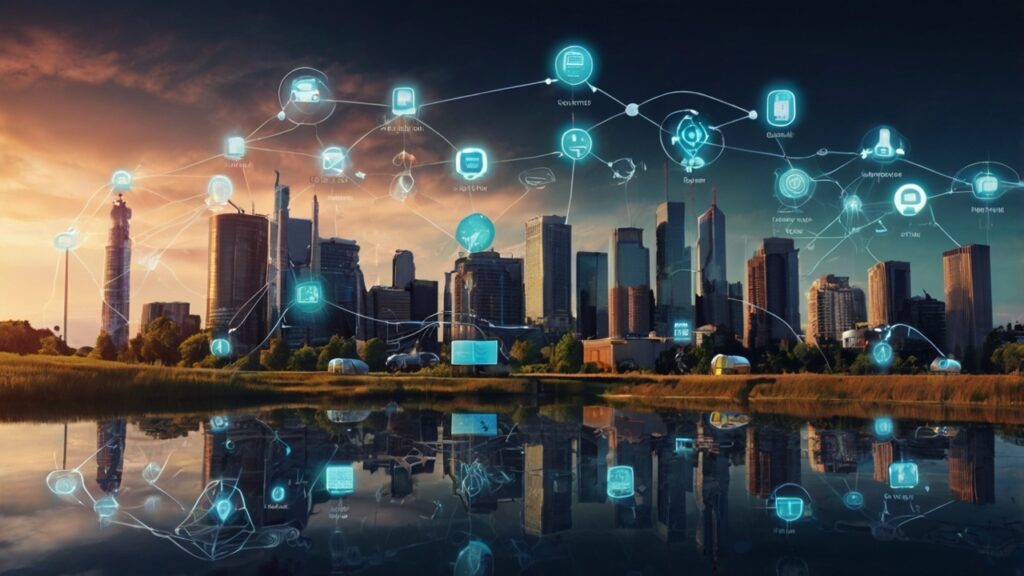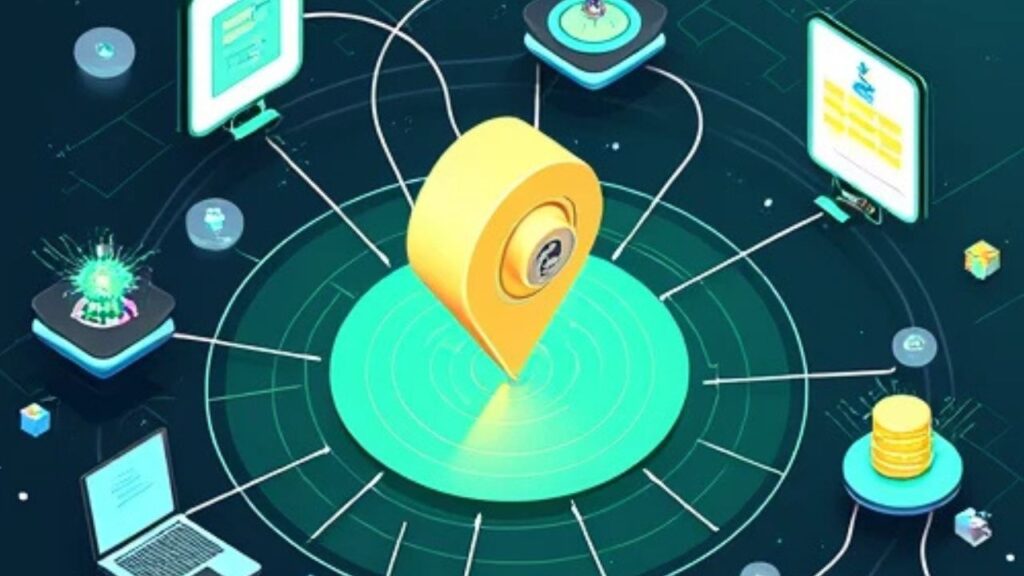The Internet of Things refers to the vast network of interconnected devices and sensors that communicate and exchange data over the internet. This concept has gained significant traction in recent years, as it allows everyday objects—from home appliances to industrial machinery—to gather and transmit information in real-time. At its core, IoT revolutionizes how devices interact with each other and with humans, fostering greater efficiency, convenience, and control in various aspects of life.
Central to the functioning of IoT is the integration of various key components. First, hardware forms the backbone of IoT; it includes sensors, actuators, and other devices that capture and transmit data. These components are often embedded into physical objects, transforming them into “smart” entities that can respond to changes in their environment.
Accompanying the hardware is software, which serves as the brain behind the operations. This software is responsible for processing the data collected by the hardware, determining actions based on that data, and facilitating communication with other devices and systems. Additionally, communication protocols, such as MQTT or HTTP, govern how data is sent and received across devices, ensuring seamless interoperability.
Data analytics is another critical element of the IoT ecosystem.The immense amount of data generated by interconnected devices can provide valuable insights when analyzed effectively. By employing advanced data analytics techniques, businesses and individuals can make informed decisions, automate processes, and enhance operational efficiency. Overall, the Internet of Things represents a transformative development in technology, shaping an interconnected world where devices collaborate to improve daily life and drive innovation.

Applications of IoT in Various Industries
The Internet of Things is revolutionizing numerous industries by enhancing operational efficiencies and fostering innovation through connected devices. In the healthcare sector, IoT applications are particularly profound. Wearable devices, such as smartwatches and fitness trackers, enable continuous health monitoring. These devices collect data on heart rates, physical activities, and sleep patterns, allowing healthcare providers to assess patient health remotely. Moreover, remote monitoring systems facilitate chronic disease management, where data is transmitted to medical professionals, prompting timely interventions and reducing hospital readmissions.
Agriculture is another industry witnessing a seamless integration of IoT technologies. Precision farming techniques harness sensors and IoT-enabled devices to monitor soil moisture levels, temperature, and crop health. This data-driven approach allows farmers to optimize resource usage, such as water and fertilizers, thereby increasing yields and minimizing waste. By utilizing IoT solutions, agricultural professionals can make informed decisions, leading to sustainable farming practices.
Smart cities embody the transformative power of IoT by interlinking various urban systems to enhance quality of life. Traffic management, for instance, can benefit from real-time data collection from connected vehicles and sensors placed around the city. This data can optimize traffic flow, reduce congestion, and lower emissions. Additionally, smart waste management technologies can monitor waste levels in bins, enabling more efficient collection routes and schedules.
In the transportation sector, IoT facilitates fleet management through real-time tracking of vehicles and cargo. This data not only improves operational efficiency but also enhances safety by monitoring driving habits and vehicle conditions. Moreover, connected vehicles can communicate with each other and their environment, paving the way for improved navigation systems and reduced road accidents.
The diverse applications of IoT signify its potential to reshape various industries fundamentally. As the technology continues to evolve, its impact is poised to expand further, creating smarter, more efficient, and sustainable practices across different sectors.
Challenges and Security Concerns
The rapid proliferation of Internet of Things (IoT) devices has introduced numerous challenges and security concerns that impact individuals and organizations alike. A primary issue revolves around data privacy, as the vast amount of sensitive information collected by these devices poses significant risks. Users often underestimate the extent of data sharing and the potential for unauthorized access, leading to a growing apprehension regarding the control over personal information.
Another pressing concern is cybersecurity risks associated with IoT networks. Many devices lack adequate security features, making them attractive targets for cyber attackers. Vulnerabilities can stem from weak passwords, outdated software, and poor device management practices. These weaknesses are further amplified by the increasing number of connected devices, which creates a larger attack surface for malicious entities. Moreover, the interconnected nature of IoT means that a breach in one device can potentially compromise an entire network, escalating the impact of security incidents.
Interoperability among devices is yet another challenge in the IoT landscape. Diverse manufacturers often utilize differing protocols and standards, which complicates seamless communication between devices and can hinder collaboration across systems. This lack of standardization not only affects functionality but also raises security concerns, as variations in device capabilities can lead to inconsistent security measures being implemented across devices.
The management of the extensive volumes of data generated by IoT systems presents additional challenges, as organizations must ensure they have the infrastructure to store, analyze, and protect this information effectively. Managing data flows while maintaining security layers is crucial for preserving user trust. Consequently, implementing robust security measures is paramount to safeguard against vulnerabilities and enhance the overall resilience of IoT ecosystems. Furthermore, ongoing industry efforts to develop standardized protocols are essential for bolstering security and fostering trust among users of IoT technologies.

The Future of IoT: Trends and Predictions
The Internet of Things is rapidly evolving, with numerous trends and predictions shaping its trajectory in the coming years. One significant trend is the emergence of 5G connectivity. This advanced network technology promises to enhance IoT devices’ capabilities by providing faster data transfer rates and reduced latency, enabling real-time communications between devices. As 5G networks continue to roll out globally, the scalability and functionality of IoT applications will likely expand, fostering more sophisticated and responsive smart systems.
Another critical development in the future of IoT will be the adoption of artificial intelligence (AI). By integrating AI algorithms with IoT devices, the ability to analyze vast amounts of data in real time will be significantly enhanced. This synergy will empower devices to make intelligent decisions autonomously, improving operational efficiency in various sectors, including healthcare, manufacturing, and agriculture. Consequently, we can expect a notable rise in smart products that learn from user habits and adapt accordingly, creating a more personalized experience.
Moreover, edge computing is expected to play a pivotal role in the IoT landscape. By processing data closer to the source—rather than relying solely on centralized cloud systems—edge computing reduces latency, conserves bandwidth, and enhances data security. This approach is particularly beneficial for industries that require immediate data insights, such as autonomous vehicles and industrial automation. As IoT devices become increasingly integrated into consumer products, we are likely to witness an explosion of smart home technologies, ranging from intelligent security systems to energy-efficient appliances.
Lastly, as market forecasts indicate, the evolution of autonomous systems will further transform industries. With advancements in machine learning and robotics, we will likely see increased reliance on IoT devices for automated operations. Collectively, these trends point toward a future where IoT seamlessly integrates into our daily lives and reshapes the way industries function, fostering a more interconnected and efficient world.
Conclusion
The Internet of Things is driving transformative changes across various industries and everyday life by enabling devices to communicate and collaborate more efficiently. From healthcare and agriculture to smart cities and transportation, IoT offers innovative solutions that optimize operations and improve user experiences.
However, as this technology advances, challenges such as data privacy, security risks, and interoperability must be addressed to ensure a secure and scalable Internet of Things ecosystem. With the emergence of 5G, AI integration, and edge computing, the future of IoT promises to enhance connectivity and create smarter, more responsive systems. As we move forward, IoT will continue to shape a more connected and efficient world.
FAQ: Internet of Things (IoT)
What is the Internet of Things
It refers to a network of connected devices and sensors that communicate with each other and exchange data over the internet, improving automation and real-time data processing.
How does IoT work?
These devices use embedded sensors to collect data, which is transmitted to a central platform or cloud. From there, the data is processed, analyzed, and used to trigger actions or provide insights.
What are some common applications of IoT?
It is used in a variety of industries, including smart homes, healthcare, agriculture, manufacturing, and transportation. Examples include smart thermostats, fitness trackers, automated farming systems, and vehicle fleet management.
Is it safe?
While IoT can improve efficiency, security remains a concern. Devices can be vulnerable to hacking if not properly secured. It’s important to use strong passwords, keep software updated, and implement encryption.
What are Internet of Things devices?
These are physical objects embedded with sensors and software that allow them to collect and exchange data. Examples include smart speakers, wearable health monitors, and connected appliances.
How is Internet of Things different from traditional internet use?
The traditional internet connects people to websites and applications, while the Internet of Things connects devices to each other and allows machines and sensors to interact without human intervention.
What is the role of 5G in IoT?
5G technology enhances the Internet of Things by offering faster data speeds, reduced latency, and improved device connectivity. This will enable more seamless and efficient IoT applications, such as real-time automation in smart cities.
What are its benefits for companies?
IoT helps businesses optimize operations, improve decision-making through data analytics, reduce costs, and enhance customer experiences. It is widely used in manufacturing, supply chain management, and customer service.
What are the challenges for its implementation?
Some key challenges include security vulnerabilities, high costs of infrastructure, data privacy concerns, and the need for standardization across different IoT systems.
What does the future of IoT look like?
The future involves greater integration with AI and machine learning, the expansion of smart cities, more autonomous devices, and the widespread use of edge computing to enhance real-time data processing.
More about Internet of Things



